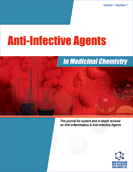Abstract
Tuberculosis (TB) remains the leading cause of mortality due to a single bacterial pathogen, Mycobacterium tuberculosis. The reemergence of tuberculosis as a potential public health threat, the high susceptibility of human immunodeficiency virus-infected persons to the disease, the proliferation of multi-drug-resistant strains (MDR-TB) and, more recently, of extensively drug resistant isolates (XDR-TB) have created a need for the development of new antimycobacterial agents. There is an ongoing need for innovation in proposing new structural scaffolds for chemotherapeutic agent development to control TB. Mycolic acids, the hallmark of mycobacteria, are high-molecular-weight α-alkyl, β-hidroxy fatty acids, which appear mostly as bound esters in the mycobacterial envelope. Isoniazid (INH) is the most prescribed chemotherapeutic agent for active TB and prophylaxis and requires activation by the catalase-peroxidase activity of KatG. The product of the M. tuberculosis inhA structural gene (InhA) has been shown to be the primary target for INH. InhA was identified as an NADH-dependent enoyl-ACP reductase specific for long chain enoyl thioesters. InhA is a member of the mycobacterial Type II fatty acid biosynthesis system, which elongates acyl fatty acid precursors of mycolic acids. The main focus of our contribution is on data describing the mode of action of an inorganic complex, pentacyano (isoniazid) ferrateII that requires no KatG-activation and is an in vitro slow-onset inhibitor of WT and INH-resistant M. tuberculosis enoyl reductases. This inorganic complex represents a new class of lead compounds to the development of anti-tubercular agents aiming the inhibition of a validated target. We also describe the recent developments in the search for inorganic complexes with anti-tubercular activity.
Keywords: Tuberculosis, mycolic acids, InhA, isoniazid, slow-onset inhibition, inorganic complex, drug resistance
 29
29





















